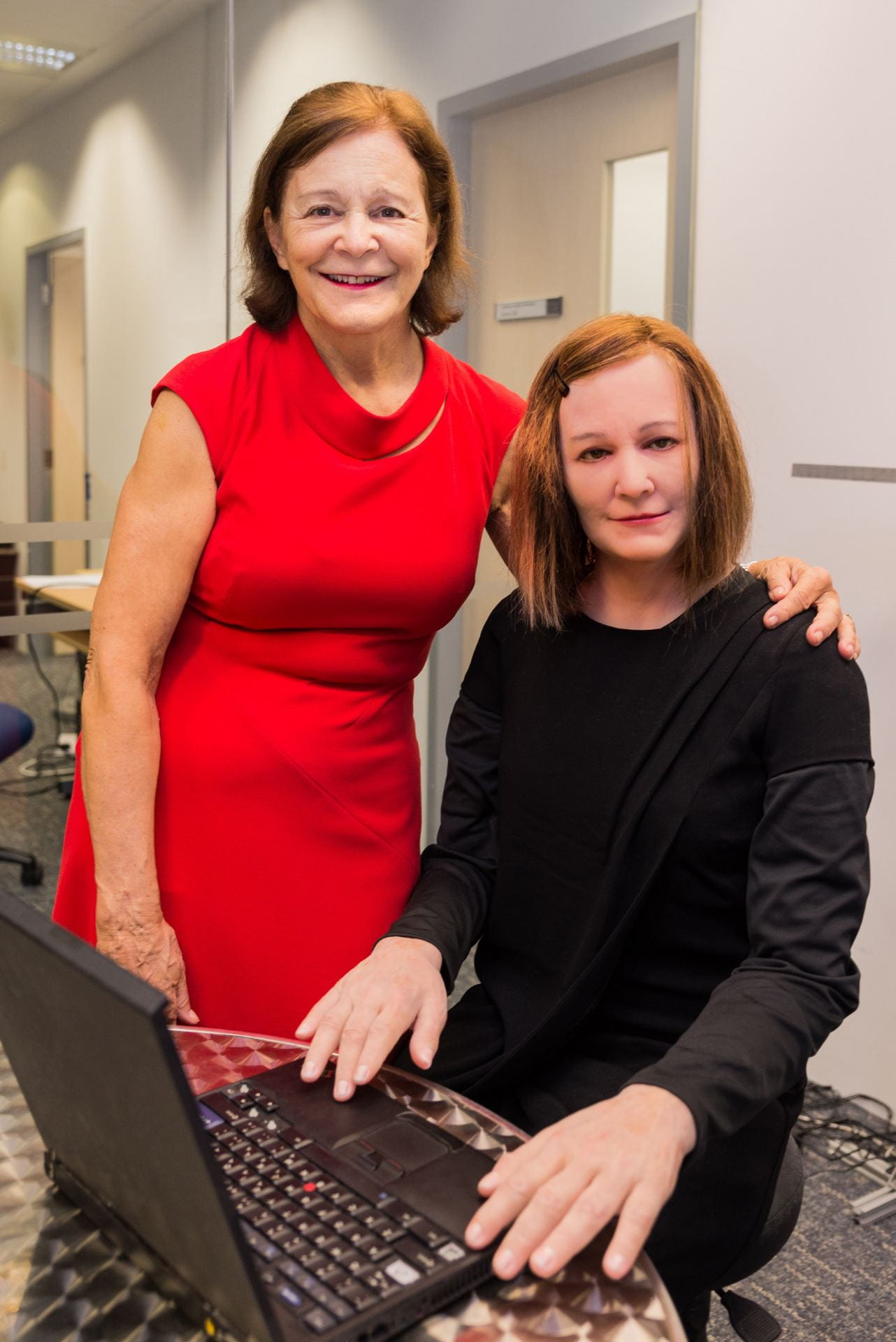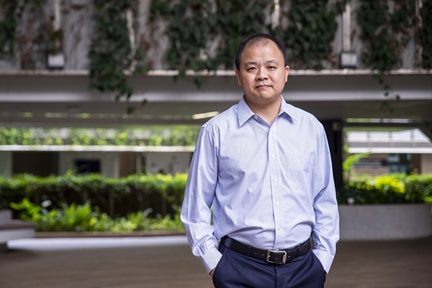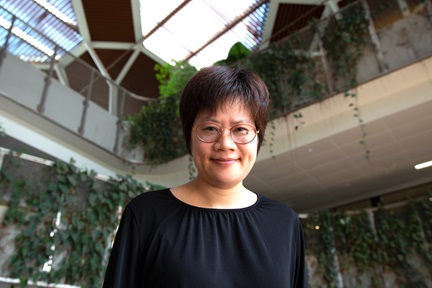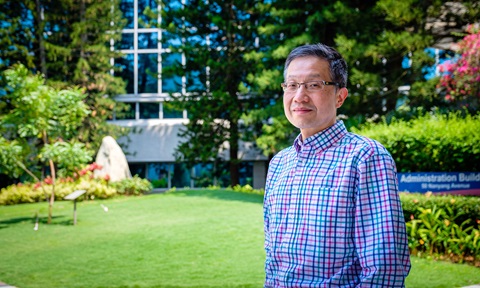Virtual tool, real impact: Prof Nadia Magnenat Thalmann
Prof Nadia Magnenat Thalmann, the inventor of one of the world's most realistic humanoid social robots, develops virtual and augmented reality technologies to support people in professional and social environments.
 Prof Nadia Magnenat Thalmann with humanoid receptionist Nadine. Photo credit: NTU.
Prof Nadia Magnenat Thalmann with humanoid receptionist Nadine. Photo credit: NTU.
When you step into NTU’s Institute for Media Innovation (IMI), you may be greeted by a polite and friendly receptionist called Nadine. Nadine needs no introduction—she’s famous for being one of the world’s most realistic humanoid social robots.
Despite Nadine’s distinct personality and emotional expressivity, Nadine’s creator, Prof Nadia Magnenat Thalmann, says: “Nadine is a computer combined with motors, actuators, synthetic skin and various software programmes.” Prof Thalmann, who joined NTU in August 2009 as the Director of IMI, adds: “Though she may appear to have feelings and empathy when interacting with a person, all of it is simulation.”
Reality check aside, Prof Thalmann is highly optimistic about the role social robots like Nadine will play in the future, for instance, as receptionists in hotels or companies, companions of the elderly, or even to represent a person in a meeting. In an ambitious project on 3D telepresence, Prof Thalmann and her colleagues at IMI’s BeingTogether Centre are developing AI- and VR-based virtual meeting platforms to bring people together in the same simulated environment using virtual entities and robots.
In another project, Prof Thalmann’s team is developing VR and AR technologies that allow people and virtual entities to participate in group activities or team sports like volleyball. Other applications for this platform include virtual tutoring, teaching others to play a musical instrument, and manufacturing training.
Prof Thalmann is the founding Director of MIRALab in Geneva, Switzerland, which advances medical imaging technologies and contributes to the preservation of cultural heritage through biomechanical and virtual simulations.
For her nearly four decades of work at the forefront of virtual human simulation, she has received several honorary doctorates and won prestigious awards such as the German Humboldt Research Award (2012) and the Career Achievement Award from the Canadian Human Computer Communications Society (2012). She has also been honoured for films and interactive VR shows that she produced or directed.














/enri-thumbnails/careeropportunities1f0caf1c-a12d-479c-be7c-3c04e085c617.tmb-mega-menu.jpg?Culture=en&sfvrsn=d7261e3b_1)

/cradle-thumbnails/research-capabilities1516d0ba63aa44f0b4ee77a8c05263b2.tmb-mega-menu.jpg?Culture=en&sfvrsn=1bc94f8_1)

7e6fdc03-9018-4d08-9a98-8a21acbc37ba.tmb-mega-menu.jpg?Culture=en&sfvrsn=7deaf618_1)






